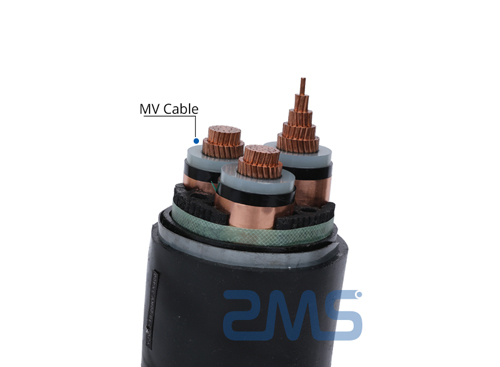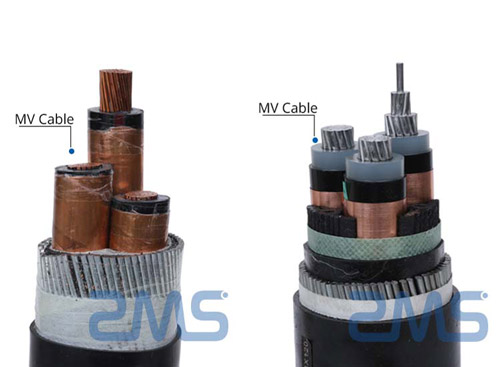Underground MV Cable

The sales scope of underground cable. Produced by ZMS Cable covers many countries around the world, and the sales volume is huge.
ZMS Cable is a cable distributor that integrates production, sales and transportation.
It also enjoys a good reputation internationally. ZMS cable company aim to high quality, nice price and fast transmission.
Definition of Underground Cable
An underground cable is a special cable. And it bury in the ground. Underground cables often use to the urban areas with dense traffic.
It can not only improve the safety and reliability of electricity use. But also beautify the city and save urban space. By the way, ZMS cable company is very good. If you want to buy underground cable. You can inquiry us and get a free quotation.
Underground Cables Laying Requirements
Una sa tanan, the underground cable must have a insulation test. When the underground cable to lay before and after in the ground.
Ikaduha, the cable conductors must connect with round sleeves. Conductors of different materials correspond to bushings of different materials. Pananglitan, copper-core cables connect by copper bushings. And aluminum-core cables connect with aluminum bushings.
Ikatulo, mark piles or hand-hole wells should set at the corners of the joints of underground cables. This is to facilitate maintenance and inspection. The distance between adjacent hand hole wells should be less than 50m.
Ikaupat, the cable specifications and models should indicate on the middle joint of the cable and the terminal head with an indicator.
Fifth, the cable joint requires that the process must seal and waterproof. And the process quality must be qualified. When cutting the cable, be careful not to damage the insulation sheath of the cable core.
The Difference Between Underground and Overhead Cable
Both underground cables and overhead cables are key choices for transmission lines, but they are different.
First, the definition is different.
Overhead cables are erect in the air. And underground cables buried in the ground.
Different functions
The main features of overhead cables are easy maintenance, low maintenance costs, and low cost. Hinuon, due to exposure to the air. And it is easily affected by the weather.
Underground cables have the characteristics of long service life, stable transmission, and high transmission reliability. Not susceptible to external interference. Because it is laid underground. And its safety performance is better.
Different places of use
Overhead cables are mostly used in remote areas and are suitable for long-distance and large-span transportation.
Underground cables are mainly used in densely populated urban areas.
Advantages of Underground Cables
First, the transmission current is more reliable. Gawas pa, not easy to get corroded by moisture in the air. And not easy to get interfered with by the outside world.
Ikaduha, the carrying capacity of the transmission current is greater. The conductors used in underground cables have higher transmission efficiency and lower power transmission losses. And the transmission line of the underground cable can reach 20 loops, which is 5-10 times that of the overhead cable
Ikatulo, underground cables are installed underground, which can make the city more beautiful and increase the living comfort of urban residents.
Ikaupat, reduce urban land space. In cities with a large flow of people, land resources can be described as an inch of money. The use of underground cables can greatly save urban land resources and increase the use-value of urban land.
The Difference Between Underground and Overhead Cables
Both underground cables and overhead cables are key choices for transmission lines. But they are different.
First, the definition is different.
Overhead cables erect in the air and underground cables bury in the ground.
Different functions.
The main features of overhead cables are easy maintenance, low maintenance costs, and low cost. Hinuon, due to exposure to the air, it is easily affected by the weather.
Underground cables have the characteristics of long service life, stable transmission, and high transmission reliability. Not susceptible to external interference. Because it is laid underground, its safety performance is better.
Different places of use.
Overhead cables main use in remote areas and it is suitable for long-distance and large-span transportation.
Underground cables main use in densely populated urban areas. Whether it is overhead cable and underground cable.
More Kind of Voltage Underground Cables



Application of Underground Cable
Classification of Underground Cable
Underground cables are different from overhead cables in that they lay in underground places. Sama sa, tunnels, pipelines, and indoors.
Underground cables main divide to power cables and control cables. Fire-resistant cables, and computer cables.
The Development Prospects of Underground Cable
The market share of underground cables has always been in a good position, judging from the data of previous years.
With the development of society and technology, the utilization rate of underground cables will also increase.
ZMS company exports various types and specifications of underground cables.
Regardless of the country’s specifications, we can provide you with them.
Our products are sold to many countries all over the world. By the way, ZMS product have a very good quality. Ug klaro, ZMS cable company is very nice.



